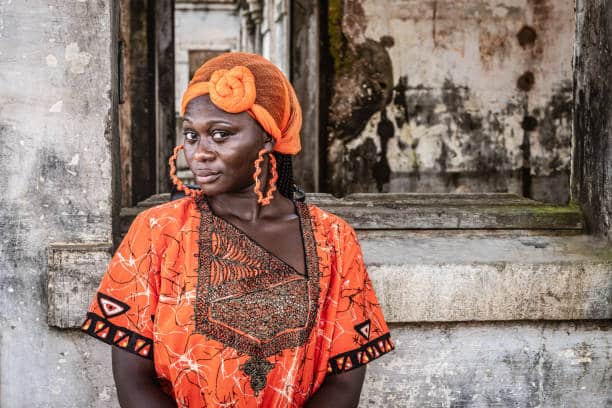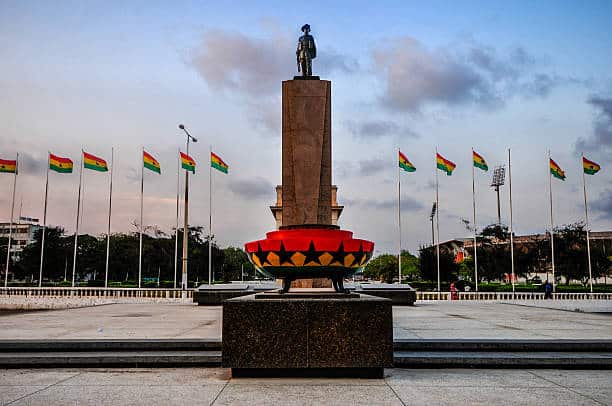
African literature has long been a mirror reflecting the continent’s complex realities, struggles, and aspirations. Among the many seminal works, The Beautiful Ones Are Not Yet Born by Ayi Kwei Armah stands out as a poignant exploration of post-independence disillusionment in Ghana.
This 1968 novel continues to resonate with readers for its stark depiction of corruption, decay, and the enduring hope for a brighter future. In this article, we look into the themes, characters, and cultural significance of The Beautiful Ones Are Not Yet Born, exploring why it remains a cornerstone of African literature.
The Beautiful Ones Are Not Yet Born: An Overview
Set in post-independence Ghana, The Beautiful Ones Are Not Yet Born chronicles the life of an unnamed protagonist who struggles to maintain his moral integrity in a society consumed by greed and corruption. The story unfolds during the early 1960s, a period when the euphoria of independence was giving way to the harsh realities of governance.

The protagonist, often referred to as “the man,” works as a low-level railway clerk. Despite the pressures of a corrupt environment and the disdain of his own family, he refuses to compromise his principles. Armah’s vivid and often unflinching prose paints a grim picture of societal decay, capturing the reader’s attention with its raw honesty.
Themes in The Beautiful Ones Are Not Yet Born
1. Corruption and Moral Decay
The novel is a searing indictment of corruption. Armah uses powerful imagery to depict the rot within Ghanaian society, from bribes exchanged in dark corners to the pervasive stench of decay that seems to permeate every aspect of life. This theme is not unique to Ghana but speaks to a broader African context, where the promises of independence were often betrayed by self-serving leaders.
2. The Struggle for Integrity
The protagonist’s unwavering commitment to honesty stands in stark contrast to the moral compromise of those around him. His resistance is both admirable and isolating, as even his wife, Oyo, and her mother view him as a failure for not succumbing to corruption to secure a better life.
3. Hope and Redemption
Despite the bleakness, the novel’s title suggests a glimmer of hope. “The Beautiful Ones” symbolize a future generation that might rise above the corruption and moral decay of the present. This enduring hope for a better tomorrow lends the story a profound sense of optimism amidst despair.
Character Analysis
The Man (Protagonist)
The unnamed protagonist is the moral compass of the novel. His quiet resilience and refusal to participate in corrupt practices make him an outsider in his own home and society. Armah crafts him as a symbol of integrity, highlighting the loneliness and sacrifice that often accompany principled living.
Oyo
Oyo, the protagonist’s wife, represents the pressures of societal expectations. Her frustration with her husband’s refusal to “play the game” stems from a desire for material comfort, reflecting the widespread disillusionment with idealism in the post-independence era.
Koomson
Koomson, a former friend of the protagonist who becomes a government minister, embodies the corrupt elite. His lavish lifestyle and eventual downfall serve as a cautionary tale about the perils of greed and excess.
The Beautiful Ones Are Not Yet Born and Its Cultural Significance
Armah’s novel is more than just a critique of Ghanaian society; it is a reflection of the broader African experience during the 20th century. The transition from colonial rule to independence was fraught with challenges, and The Beautiful Ones Are Not Yet Born captures the disillusionment that followed the initial euphoria.
The novel’s universal themes of corruption, integrity, and hope ensure its relevance even today. It stands alongside other iconic works of African literature, such as Chinua Achebe’s Arrow of God and Wole Soyinka’s The Lion and the Jewel, as a vital piece of the continent’s literary heritage.
Comparisons with Other African Literary Classics
Arrow of God by Chinua Achebe
Like The Beautiful Ones Are Not Yet Born, Achebe’s Arrow of God examines the tensions between tradition and modernity. Both novels highlight the challenges faced by African societies during periods of significant transition, though Achebe’s work focuses more on pre-colonial and colonial dynamics.
The Lion and the Jewel by Wole Soyinka
Soyinka’s The Lion and the Jewel offers a lighter, satirical take on similar themes of societal change and cultural conflict. While Armah’s novel is deeply introspective and somber, Soyinka uses humor and wit to explore the clash between tradition and modernity in Nigeria.
No Longer at Ease by Chinua Achebe
Achebe’s No Longer at Ease and Armah’s novel share a focus on the personal struggles of individuals navigating corrupt societies. Both protagonists face moral dilemmas, though Obi in No Longer at Ease ultimately succumbs to corruption, contrasting sharply with the steadfastness of Armah’s protagonist.
Half of a Yellow Sun by Chimamanda Ngozi Adichie
Adichie’s Half of a Yellow Sun explores the Nigerian Civil War, delving into themes of love, loss, and resilience. While its historical backdrop differs from Armah’s Ghana, both novels underscore the profound impact of political upheaval on individual lives.
The Use of Symbolism in The Beautiful Ones Are Not Yet Born
Armah’s masterful use of symbolism enhances the novel’s impact. The image of filth and decay recurs throughout the story, representing the moral and ethical rot in society. The bus conductor’s hand, coated with grime as he collects fares, is a particularly vivid metaphor for the pervasive nature of corruption.
Another powerful symbol is the chichidodo bird, a creature from Ghanaian folklore that detests excrement yet feeds on maggots found in it. This paradox mirrors the hypocrisy of those who denounce corruption while benefiting from it.
The Beautiful Ones Are Not Yet Born in Modern Context
Decades after its publication, The Beautiful Ones Are Not Yet Born remains a relevant critique of governance and societal values. In many African nations, the issues of corruption and moral compromise persist, making Armah’s insights as pertinent as ever. The novel also serves as a reminder of the importance of integrity and the enduring hope for change.
Readers seeking a deeper understanding of African literature will find this novel a thought-provoking companion to other classics like Arrow of God, The Lion and the Jewel, and No Longer at Ease. Its themes resonate far beyond Ghana, offering universal lessons about human nature and the quest for a just society.
Conclusion
The Beautiful Ones Are Not Yet Born is a masterpiece of African literature that continues to captivate readers with its unflinching portrayal of societal decay and the resilience of the human spirit. Ayi Kwei Armah’s powerful prose and rich symbolism make it a timeless work that speaks to the struggles and hopes of generations.
Whether you are a seasoned reader of African literature or new to the genre, this novel is a must-read. It stands alongside works like No Longer at Ease by Chinua Achebe and Half of a Yellow Sun by Chimamanda Ngozi Adichie as a plus to the richness and diversity of African storytelling. As we look to the future, Armah’s vision of “the beautiful ones” reminds us of the potential for a better tomorrow.

Leave a Reply
You must be logged in to post a comment.